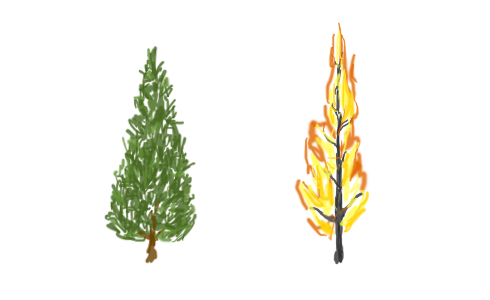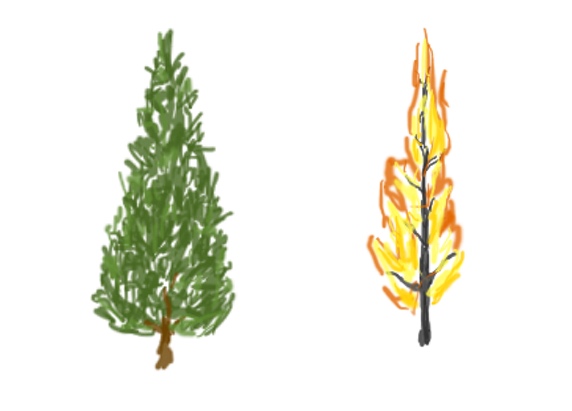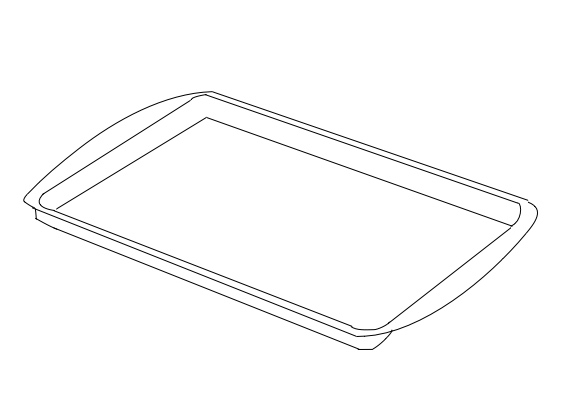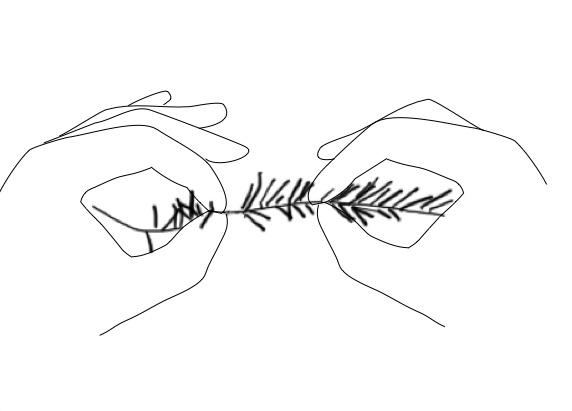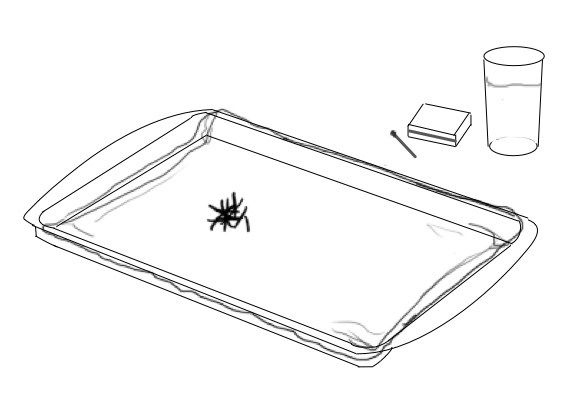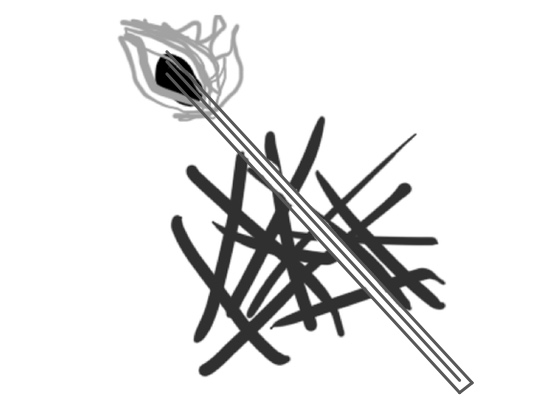Grade Level
6 - 8
minutes
15 min - 1 hr
subject
Chemistry
Activity Type:
safety required, holiday activity
Are Christmas Trees a Holiday Hazard?
The Christmas tree, that staple of holiday merriment, seems like it would be a prime source of home fires. For instance, Christmas trees contain some flammable compounds, as well as plenty of organic compounds (such as cellulose) that can serve as fuel for a fire; their needles provide lots of surface area that can come in contact with oxygen (which is necessary for fires—see “Combustion Review,” below); and they’re often placed near sources of heat and electrical energy, such as electrical outlets, holiday lights, and festive votive candles, which can ignite a fire.
But according to the National Fire Prevention Association, Christmas tree fires only accounted for 0.1 percent of reported home fires from 2007 to 2011. However, during those same years, the fires that did involve Christmas trees were nearly four times as likely to cause deaths, and were more likely to occur after Christmas than before.1
So why don’t more Christmas trees catch fire, and why are they more likely to catch fire after Christmas? Find out the answers by experimenting with the flammability of Christmas tree needles using the protocol below. Explore how the tree’s age, its dryness, and the heat source affect whether or not needles burn and how quickly, and how big the flame is.
Topics: Combustion, ignition, oxidation, organic compounds
Combustion Review:
Fire is generally the result of a type of chemical reaction called combustion. Combustion can occur when fuel in the form of an organic substance (that is, one that contains hydrogen and carbon) encounters an energy source (such as heat) in the presence of oxygen. If there is sufficient fuel, oxygen, and energy to set off a chain reaction, combustion will occur, producing heat, light, carbon dioxide, and water as a result. Here is the unbalanced, general combustion reaction:
Materials:
- One fresh sprig of fir, pine, cedar, or ash, trimmed to under five inches long
- One old, dry sprig of the same tree type, trimmed to under five inches long*
- Extra pieces of fir, pine, cedar, or ash sprigs for experimenting
- Box of matches
- Container of water
- Small cookie sheet covered with aluminum foil
- Access to a sink or other non-flammable surface (marble, slate, lab bench) that is stable and water-resistant
- Stopwatch or timer
* If you don’t have any old, dry sprigs on hand, you can make some by placing new sprigs on a metal tray to dry naturally or by placing the tray in a traditional convection oven set to low (<170°F) for a couple hours. Check back frequently; you’ll know the sprigs are dry when the needles pop off when touched.
Safety Information
This experiment should be performed under adult supervision, in a well-ventilated area with access to running water. All experimenters should wear safety goggles and tie back hair and loose clothing before starting this activity. Start with the basic flammability protocol before making changes.
Modify the experiment
Repeat this experiment using one of the following modifications. Try only one at a time:
- Use needles from an old sprig.
- Use two matches instead of one.
- Use large and small needles from different types of tree.
Hint #1: Water interferes with combustion
Hint #2: The amount of energy matters
Different substances require different amounts of energy, usually in the form of heat, to ignite (or “activate”) a combustion reaction. Substances that are considered fire hazards are usually made out of material that requires less energy to activate a combustion reaction. With enough energy, most organic substances can be ignited.
Hint #3: The amount of fuel matters
Next Generation Science Standards:
Disciplinary Core Ideas:
PS1.B: Chemical Reactions
Substances react chemically in characteristic ways. In a chemical process, the atoms that make up the original substances are regrouped into different molecules, and these new substances have different properties from those of the reactants.
PS3.B: Conservation of Energy and Energy Transfer
The amount of energy transfer needed to change the temperature of a matter sample by a given amount depends on the nature of the matter, the size of the sample, and the environment.
Performance Expectations:
MS-PS3-4, MS-PS1-2
Crosscutting Concepts:
Cause and Effect: Cause and effect relationships may be used to predict phenomena in natural or designed systems. (MS-PS1-4)
Science and Engineering Practices:
Planning and Carrying Out Investigations: Planning and carrying out investigations to answer questions or test solutions to problems in 6–8 builds on K–5 experiences and progresses to include investigations that use multiple variables and provide evidence to support explanations or design solutions.
Meet the Writer
About Ariel Zych
@arieloquentAriel Zych was Science Friday’s director of audience. She is a former teacher and scientist who spends her free time making food, watching arthropods, and being outside.
